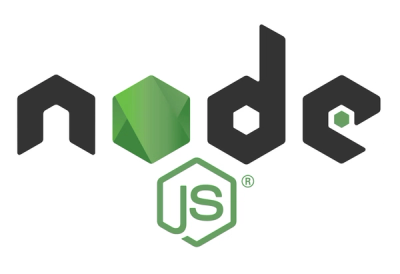
Security News
Node.js Homepage Adds Paid Support Link, Prompting Contributor Pushback
A new Node.js homepage button linking to paid support for EOL versions has sparked a heated discussion among contributors and the wider community.
@dxc-technology/halstack-client
Advanced tools
Halstack Client for JavaScript enables developers to easily work with hypermedia-based APIs in a declarative manner. It offers a set of functionalities to facilitate the navigation between hypermedia resources and get access to their properties dynamically, based on the HAL and JSON Hyper-Schema draft specifications, as well as DXC API guidelines and HAL extensions.
This SDK is released as a client-agnostic library that can be used both in browser applications (such as Vanilla JS, React or Angular applications) or backend applications (NodeJS applications). As such, it is distributed as UMD.
npm install @dxc-technology/halstack-client
// require from the dependency the modules you need
const {
HalResource,
HalResponse,
HalApiCaller,
} = require("@dxc-technology/halstack-client");
// require from the dependency the modules you need
import {
HalResource,
HalResponse,
HalApiCaller,
} from "@dxc-technology/halstack-client";
The purpose of this module is facilitating the access to the information of a given resource. This factory function receives a JSON object with the HAL Resource Representation as a parameter.
It returns a HalResource Object, encapsulating the original HAL Resource Representation and including a set of functions that will allow you to access the data from the resource in a declarative manner, without having to fully understand the details of how HAL resource representation is structured.
The HalResource can also be used to help developers to create a compliant HalResource representation to be included in a Hal response, exposing functions to add different sections that typically can be found in a resource.
| Name | Type | Description |
|---|---|---|
resourceRepresentation | Object | The whole resource representation. |
getTitle | ()=>String | Returns the resource title. Taken from \_options.title. |
getInteractions | ()=>HalInteraction[] | Returns an array of HalInteraction objects. Taken from the \_options.links array. |
getInteraction | (String)=>HalInteraction | Receives a string with the rel of the interaction. Returns the HalInteraction object. |
getItems | ()=>Object[] | Returns an array of the original item link objects. Taken from the \_links.item array. |
getItem | (Number)=>Object | Receives the index of the item. Returns the item object. |
getLinks | ()=>Object[] | Returns an array of the original link objects (adding the rel), ignoring item link. Taken from the \_links object. |
getLink | (String)=>Object | Receives a string with the rel of the link. Returns the link object (adding the rel). |
getProperties | ()=>Object[] | Returns an array of HalProperty objects. Taken from the resource root level properties. |
getProperty | (String)=>Object | Receives a string with the key of the property. Returns the HalProperty object. |
getRequiredProperties | ()=>String[] | Returns an array with the required properties key. Taken from the \_options.required array. |
isPropertyRequired | (String)=>Bool | Receives the key of a property. Returns true if it exists within the \_options.required array. |
getSchemaProperties | ()=>Object[] | Returns an array of the original schema objects for properties (adding key). Taken from the \_options.properties object. |
getSchemaProperty | (String)=>Object | Receives the key of a property. Returns the property's schema object (adding key) if exists within \_options.properties object. |
addLink | (Object)=>void | Receives an object as parameter. This object can contain the usual link properties as { rel, name, href, title } where rel and href are required. The object will be added to the \links section using rel as key |
addLinks | (Object)=>void | Receives an object as parameter. This object can contain the usual link properties as { rel, name, href, title } where rel and href are required. The object will be added to the \links section using rel as key |
addTitle | (String)=>void | Assign the parameter received to the resource title in \_options.title |
addItem | (Object)=>void | Add the object received as parameter as a resource \_link item |
addItems | (Object[])=>void | Add every object in the list received as parameter as a resource \_link item. |
addProperties | (Object)=>void | Add the key:values found in the object received as parameter as resource properties. |
addOptionsProperties | (Object)=>void | Add every property received in parameter as property under the \_options.properties section |
addOptionsProperty | (Object)=>void | Add the property ({key: schema}) received in parameter as property under the \_options.properties section |
addInteraction | (Object)=>void | Add the object received as parameter ({rel: Interaction}) under the options.link section |
addOptions | (Object)=>void | It receives an object as parameter and add interactions , properties, required and title if those sections are found as object keys. |
Includes the existing attributes of the original interaction object. It provides the following additional helper functions:
| Name | Type | Description |
|---|---|---|
getRequiredProperties | ()=>String[] | Returns an array with the required properties key. Taken from the "schema.required" array of the interaction. |
isPropertyRequired | (String)=>Bool | Receives the key of a property. Returns true if it exists within the "schema.required" array of the interaction. |
getSchemaProperties | ()=>Object[] | Returns an array of the original schema objects for properties (adding key). Taken from the \schema.properties object of the interaction. |
getSchemaProperty | (String)=>Object | Receives the key of a property. Returns the property's schema object (adding key) if exists within \schema.properties object of the interaction. |
hasProperty | (String)=>Bool | Receives the key of a property. Returns true if it exists within the \schema.properties object of the interaction. |
| Name | Type | Description |
|---|---|---|
isRequired | ()=>Bool | Returns true if the property exists within the \_options.required array. |
existsInInteraction | (String)=>Bool | Receives a string with the rel of an interaction. Returns true if the property exists within the "schema.properties" object of the interaction. |
getSchema | ()=>Object | Returns the property's schema object (adding key) if exists within \_options.properties object. |
The purpose of this module is facilitating the access to the information returned inside an API response. This factory function accepts an object with the following attributes as a parameter:
| Name | Type | Description |
|---|---|---|
body | Object | The message-body is the data bytes transmitted associated with a http response. |
headers | Object | Contains the http headers which provide information about the server and about further access to the resource identified by the Request-URI. |
status | Number | Status codes are issued by a server in response to a client's request made to the server. It includes codes from IETF Request for Comments (RFCs). |
It returns HalResponse Object.
| Name | Type | Description |
|---|---|---|
body | JSON Object | Response message-body |
headers | JSON Object | Http headers |
status | Number | Https response code |
type | String | Response format. Example: application/JSON |
halResource | HalResource | HalResource Object composed using the information provided inside the body. |
containsHalResource | Bool | True if the content of the response is a HAL resource. |
This module is a HTTP client which takes care of handing out parsed HalResponses. It exports the following functions:
| Name | Type | Description |
|---|---|---|
setGlobalHeaders | function | Receives a headers object that will be used for all http requests done with this module. |
get | function:Promise(HalResponse) | Receives a { url, headers } object as a parameter. Returns a promise and will pass a HalResponse object to the handler. |
options | function:Promise(HalResponse) | Receives a { url, headers } object as a parameter. Returns a promise and will pass a HalResponse object to the handler. |
patch | function:Promise(HalResponse) | Receives a { url, body, headers } object as a parameter. Returns a promise and will pass a HalResponse object to the handler. |
post | function:Promise(HalResponse) | Receives a { url, body, headers } object as a parameter. Returns a promise and will pass a HalResponse object to the handler. |
put | function:Promise(HalResponse) | Receives a { url, body, headers } object as a parameter. Returns a promise and will pass a HalResponse object to the handler. |
del | function:Promise(HalResponse) | Receives a { url, headers } object as a parameter. Returns a promise and will pass a HalResponse object to the handler. |
See Halstack Client License here
See our issues
FAQs
DXC Technology Halstack Client
The npm package @dxc-technology/halstack-client receives a total of 1,658 weekly downloads. As such, @dxc-technology/halstack-client popularity was classified as popular.
We found that @dxc-technology/halstack-client demonstrated a healthy version release cadence and project activity because the last version was released less than a year ago. It has 0 open source maintainers collaborating on the project.
Did you know?

Socket for GitHub automatically highlights issues in each pull request and monitors the health of all your open source dependencies. Discover the contents of your packages and block harmful activity before you install or update your dependencies.

Security News
A new Node.js homepage button linking to paid support for EOL versions has sparked a heated discussion among contributors and the wider community.

Research
North Korean threat actors linked to the Contagious Interview campaign return with 35 new malicious npm packages using a stealthy multi-stage malware loader.

Research
Security News
The Socket Research Team investigates a malicious Python typosquat of a popular password library that forces Windows shutdowns when input is incorrect.